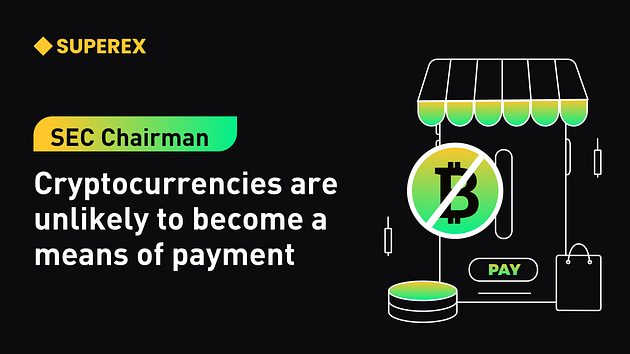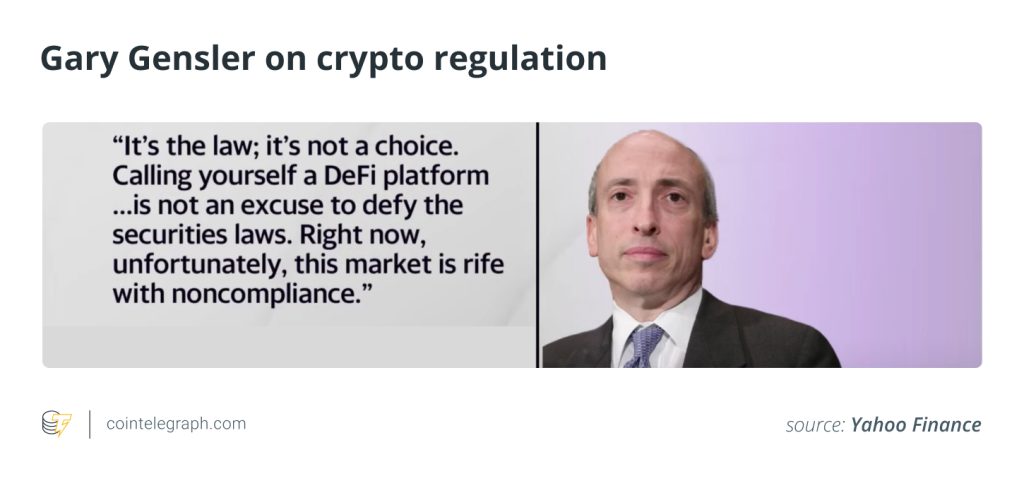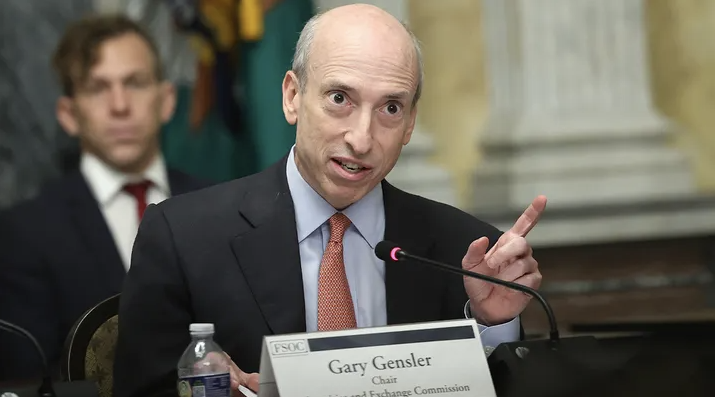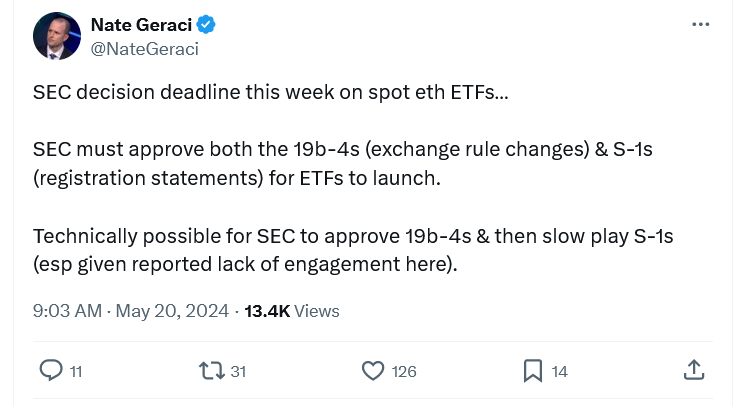SuperEx丨SEC Chairman: Cryptocurrencies are unlikely to become a means of payment.

#SEC #SuperEx #Cryptocurrencie
Recently, Gary Gensler, the chairman of the SEC, stated during an event at New York University School of Law that he believes Bitcoin and other cryptocurrencies are unlikely to become widely used payment methods; they are more likely to be viewed as a store of value. This aligns with the positioning of gold, indicating that cryptocurrencies will inevitably become one of the mainstream risk asset categories.
At the same time, Gensler criticized fraudulent activities within the crypto industry, noting that several crypto leaders have been imprisoned or extradited in 2024. Additionally, he believes that the existing Howey Test is sufficient to regulate the crypto industry without requiring an additional regulatory framework.
Gensler stated that the SEC has always been fair and neutral, and all investors can decide the utility of any cryptocurrency based on the documents disclosed by the SEC. However, from a national perspective, the existence of cryptocurrencies could threaten the operation of the economic system, as governments clearly prefer to have only fiat currency as their legal tender. If the current monetary system in the U.S. fails to meet developmental needs, they might even consider not implementing a gold standard.
Gensler’s remarks are essentially a deep analysis of the current positioning of the entire crypto industry. Although some crypto enthusiasts have high expectations for Bitcoin and other tokens in global payments, they essentially resemble digital gold, suitable for storing value rather than making payments. As global financial markets mature, crypto assets are gradually being categorized as risk assets, becoming part of institutional investors’ diversified portfolios.
- Click to register SuperEx
- Click to download the SuperEx APP
- Click to enter SuperEx CMC
- Click to enter SuperEx DAO Academy — Space

Impact on the Crypto Market
Gensler’s statements indicate that U.S. regulatory agencies are reevaluating the role of cryptocurrencies. This sends an important signal to investors that cryptocurrencies like Bitcoin and Ethereum are transitioning from highly volatile assets to mainstream investment tools.
This change has a dual impact on the crypto market. First, investors may allocate more funds to cryptocurrencies as a long-term asset class rather than a short-term trading tool. Second, this may also influence the development direction of emerging crypto projects, with more projects focusing on developing decentralized finance (DeFi) and smart contract applications rather than payment functions.
Gensler emphasized that the current Howey Test is sufficient to address the crypto industry, and no additional legal framework is needed. This means that the SEC will continue to use existing regulatory tools to combat illegal activities in the market and regulate crypto assets. This stance raises compliance demands for the entire industry.
In particular, for those crypto projects that are not registered as securities, future legal pressures may increase. This stringent regulatory environment may curb the development of some fraudulent projects while also providing a more stable market environment for legitimate and compliant projects.
At the same time, Gensler believes cryptocurrencies are more likely to serve as a “store of value,” a statement that coincides with Bitcoin’s positioning as “digital gold.” Currently, many traditional financial institutions have begun to adopt Bitcoin as part of their asset allocation. Institutions like BNY Mellon, Fidelity Investments, and JPMorgan are further embracing cryptocurrencies through custody and trading services. This trend indicates that cryptocurrencies are evolving from mere speculative tools to more robust and mature financial assets.
However, the volatility of cryptocurrencies remains the biggest obstacle to their becoming mainstream store-of-value assets. Despite Bitcoin and Ethereum’s market capitalizations ranking among the top in global financial assets, their price fluctuations still deter some investors. Thus, Gensler’s perspective is reasonable in the long run: the core function of cryptocurrencies is currently not suitable for payment systems, but they hold greater potential for storing value.
Finally, Gensler’s remarks also touch on government vigilance regarding cryptocurrencies. He pointed out that if cryptocurrencies are widely used for payments, they could threaten the sovereign status of national currencies. This viewpoint reflects the concerns many countries have regarding the rise of cryptocurrencies, especially when they face challenges in maintaining currency stability and controlling capital flows.
With the advancement of central bank digital currency (CBDC) projects, governments may further restrict the use of private cryptocurrencies in the payment sector. For example, China’s digital yuan has already been widely promoted, and other countries like the European Central Bank are also accelerating the development of the digital euro. In the future, the payment functions of cryptocurrencies may increasingly be replaced by official digital currencies, leaving mainly the store of value function for private crypto assets.
Overall, Gensler’s speech provides a clear insight into regulatory trends and industry development directions. He believes that while cryptocurrencies will not become mainstream payment methods, they will play an important role as a store of value. In the future, the compliance and legitimacy of crypto assets will be a focus for regulatory agencies, and those projects that can operate within a compliant framework will benefit significantly.
For investors, the long-term value of cryptocurrencies remains promising. Despite their clear limitations as payment methods, their role in global asset allocation and risk hedging will become increasingly important. We can foresee that as the market continues to mature, crypto assets will gain recognition from more mainstream investors, gradually solidifying their indispensable position within the global financial system.







Responses